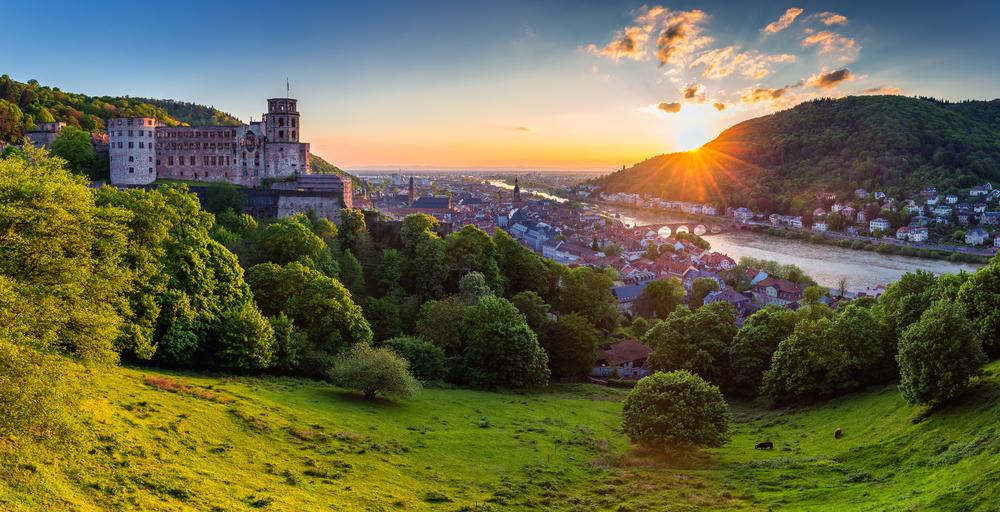Heidelberg Castle rises high above the medieval town of Heidelberg, Germany. First mentioned in 1214 as a fortified medieval castle, it later served as a royal residence for the prince-electors of the Holy Roman Empire. Different architectural styles are present throughout the complex.
The Ruprecht’s Wing, the oldest castle, is an example of Gothic architecture with its ribbed vaults and keystones. The Ottheinrich’s Wing epitomizes the ideal German Renaissance palace with its decorated façade, which features sculptures of figures from antiquity.






